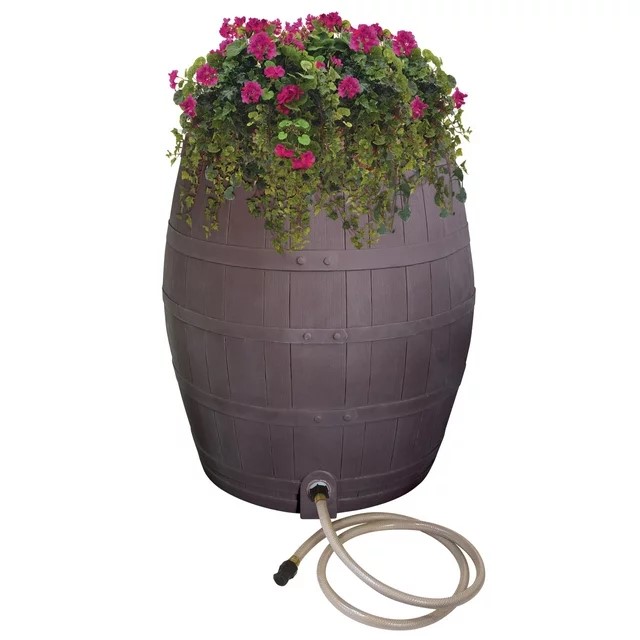How to reduce surface water run-off in your yard – 4 effective DIY methods to try this spring
Implementing these clever solutions will prevent your lawn, patio and flower beds from flooding and waterlogging


Heavy rainfall can often lead to drainage problems in the backyard, with waterlogged lawns and flooded garden borders an unsightly and worrying issue. Fortunately, implementing innovative garden drainage solutions can reduce and prevent flooding and waterlogging, and many of these ideas are quick to install and cost-effective.
Surface runoff can be problematic if you live in an urban area with excessive amounts of concrete or paving, or for those with sloping ground and clay-based soils in the backyard. During the winter and spring months, heavy rainfall can result in the ground becoming saturated, with homeowners only then realizing that there is a drainage problem with the sudden appearance of waterlogged lawn areas.
So, instead of waiting for your yard to flood, why not implement preventative measures now? There are many innovative and effective solutions to consider when landscaping your yard, and while drainage might not seem the most exciting garden project to take on, doing so sooner rather than later is always best, and can prevent problems in the long term. Here, we share four solutions for how to reduce surface runoff and improve drainage in your backyard.
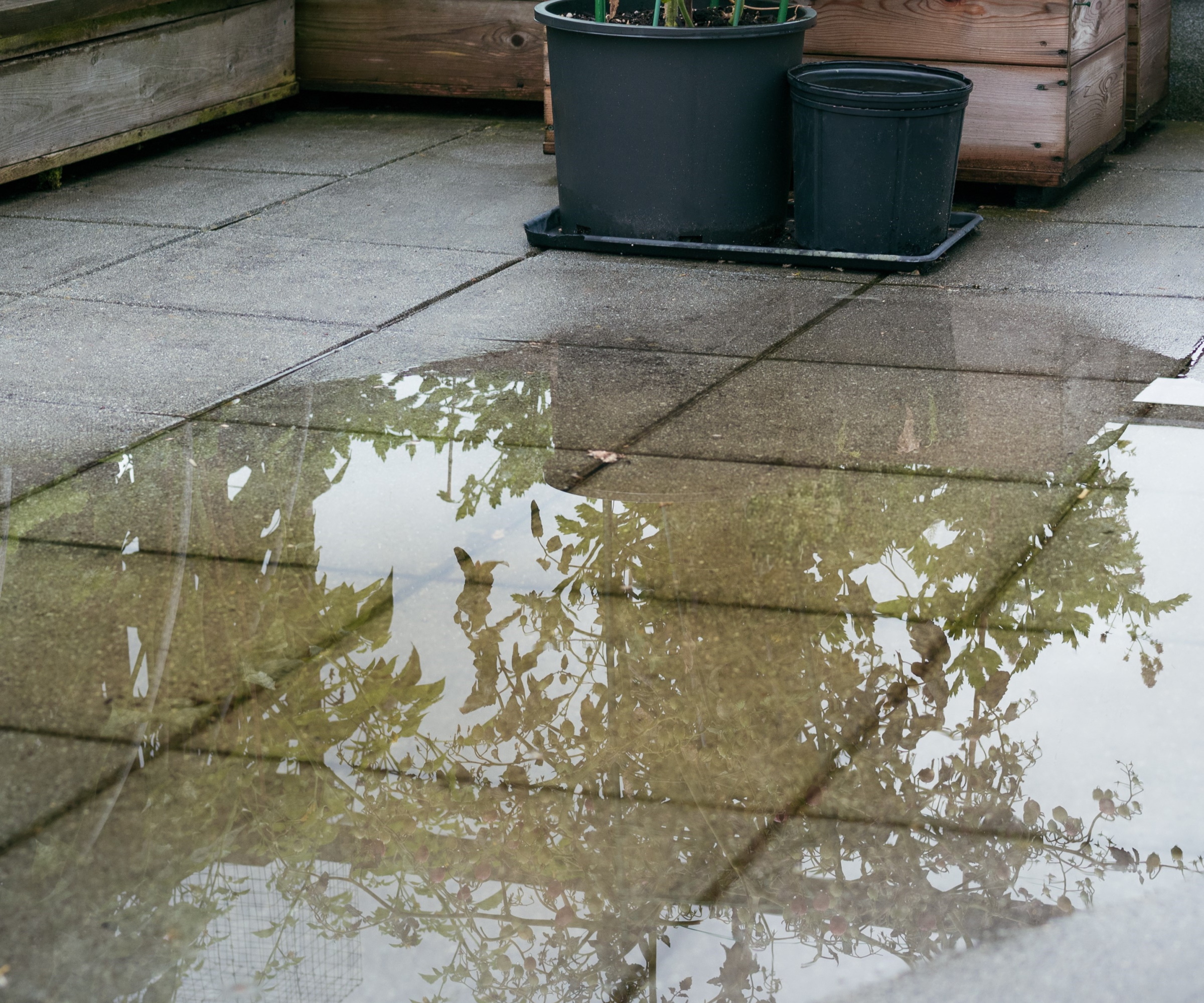
4 innovative ideas to reduce surface runoff
Many of us suffer from drainage issues in the backyard, with waterlogged lawns and flooded planting borders appearing during fall, winter and spring. Drainage solutions can be quick to install and relatively cost-effective, enabling you to avoid drainage problems this year.
1. Install a French Drain
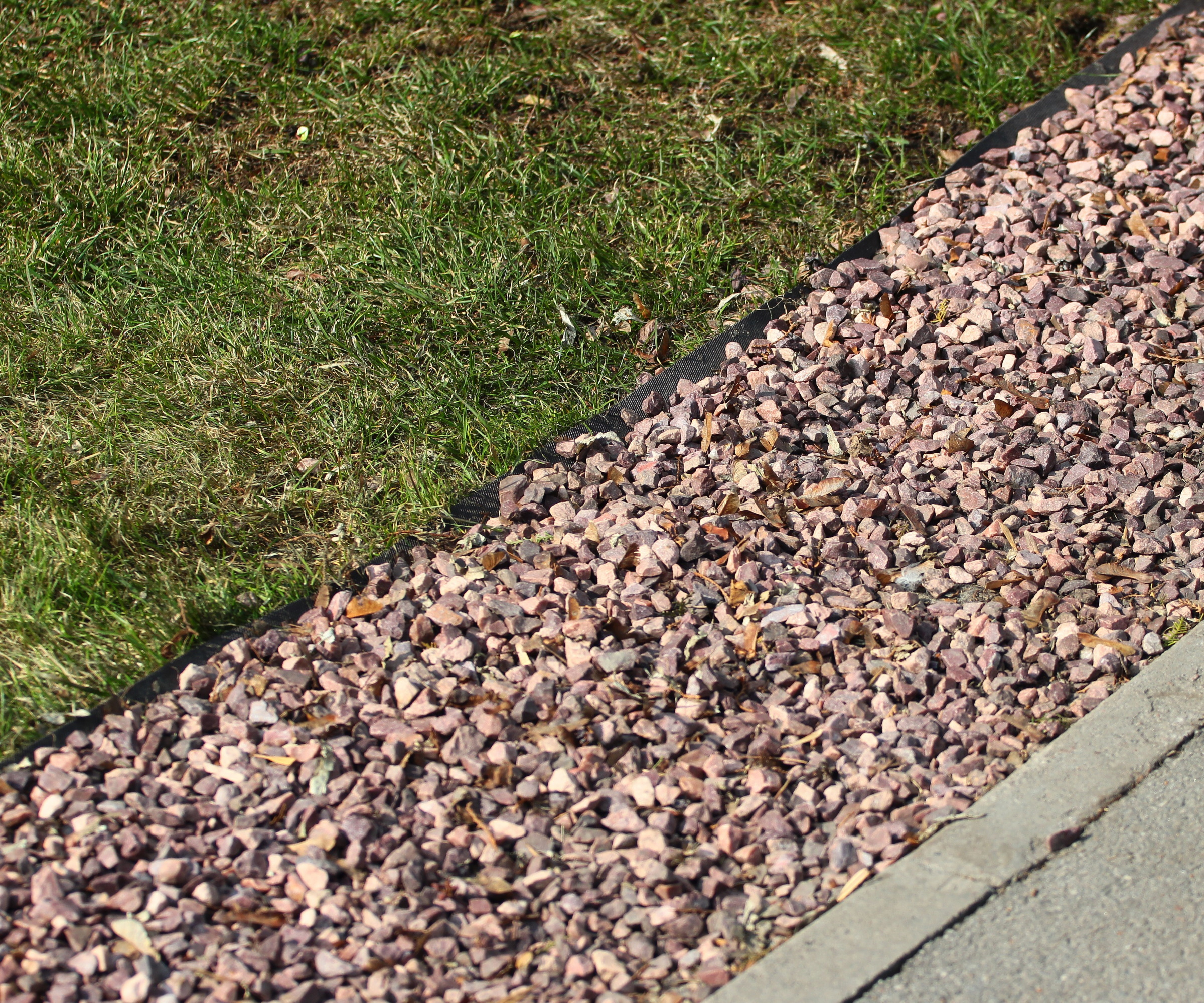
French drains can help ease drainage in problematic areas of the backyard and can be particularly useful for those homeowners with a large driveway or patio area.
When considering how to use a French drain, this simple method redirects water via a narrow channel or trench. This trench is typically lined with a permeable membrane, with a perforated pipe placed inside the trench that will move water to an area of the yard where it can drain more freely. Finally, the trench is backfilled with gravel, helping excessive surface runoff to drain away via the perforated pipe.
For smaller yards or for those gardeners keen to take on some DIY, French drains can be relatively simple to install, but it is always recommended to use a professional service if you are in doubt. One of the most common French drain mistakes to avoid is getting the gradient wrong. Remember that the trench must sit at a slight angle, as water will flow under the force of gravity, moving downhill.
Design expertise in your inbox – from inspiring decorating ideas and beautiful celebrity homes to practical gardening advice and shopping round-ups.
2. Use rain barrels
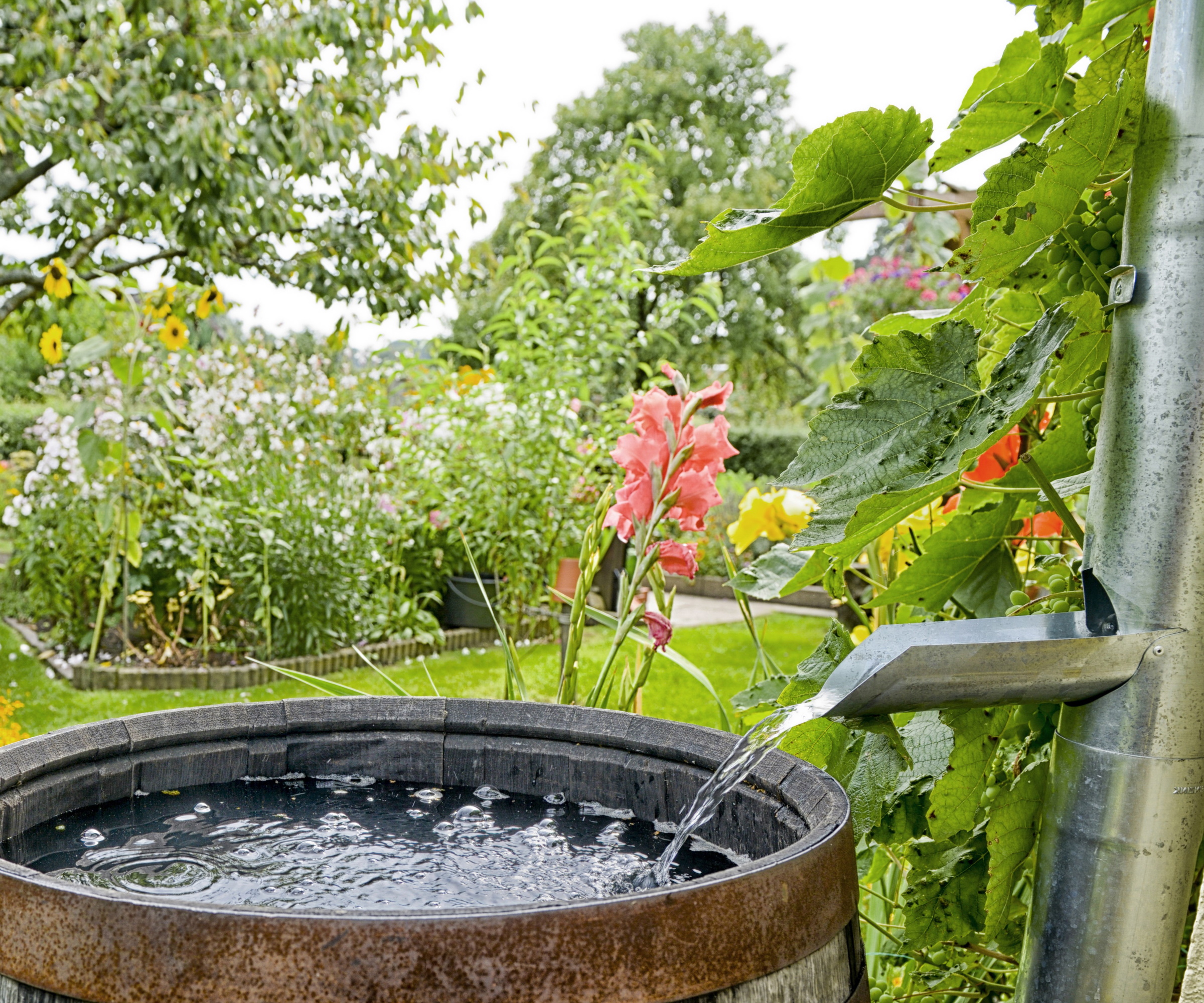
Heavy rainfall can often lead to excessive surface runoff, particularly for those who have a large amount of roof space or have multiple garden buildings such as garages or sheds. If you have not already done so, ensure that all outbuildings, including greenhouses, have drain pipes attached to rain barrels that can be used to collect rainwater.
Rain barrels are one of the best solutions for those seeking garden water-saving tips, considered by many to be a sustainable way to collect rainwater that can be stored and used during the warmer months of the year.
It can often be a good idea to install multiple rain barrels, enabling you to gather as much rainwater as possible, thereby preventing this water from reaching saturated garden borders.
One of the most common rain barrel problems that gardeners worry about is the smell of harvested rainwater. While this is not usually a problem, and your plants will certainly not mind any smells, an annual clean of the rain barrel in the fall is recommended to avoid this.
Shop for rain barrels
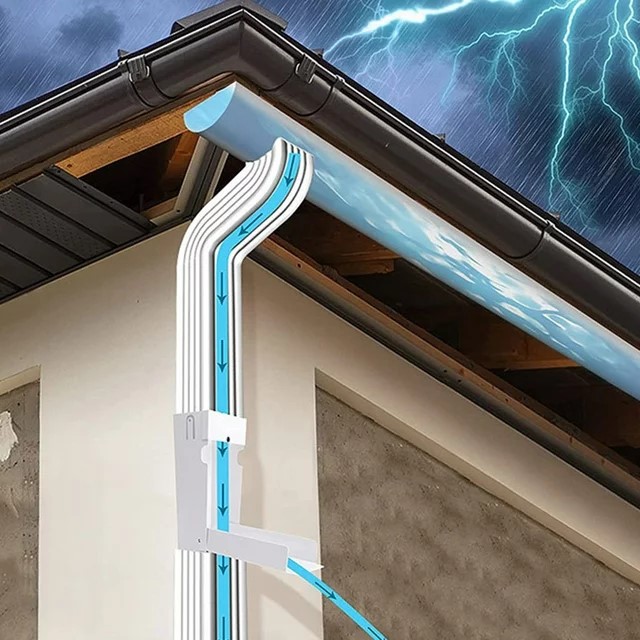
This rainwater collector can be installed on the downpipe to transfer rainwater to a rain barrel. This rainwater collection diverter is made of premium metal material, which is sturdy with waterproof and rust-proof surface, making it is easy to collect rain water outdoors.
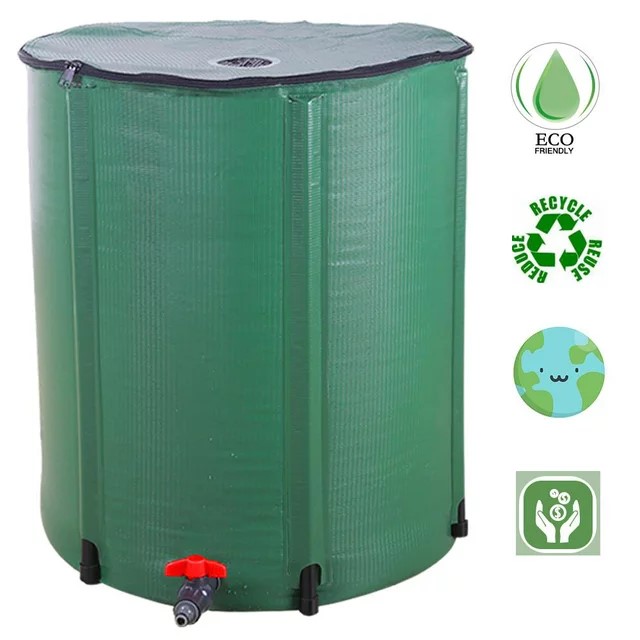
This is a sustainable solution to reuse the rainwater in your garden watering. Based on approximate calculations, this rain barrel can save your water bill up to 40% per year! This portable rain barrel is made from PVC frame and PVC mesh fabric. It is designed for long-term usage.
3. Use gravel with paving
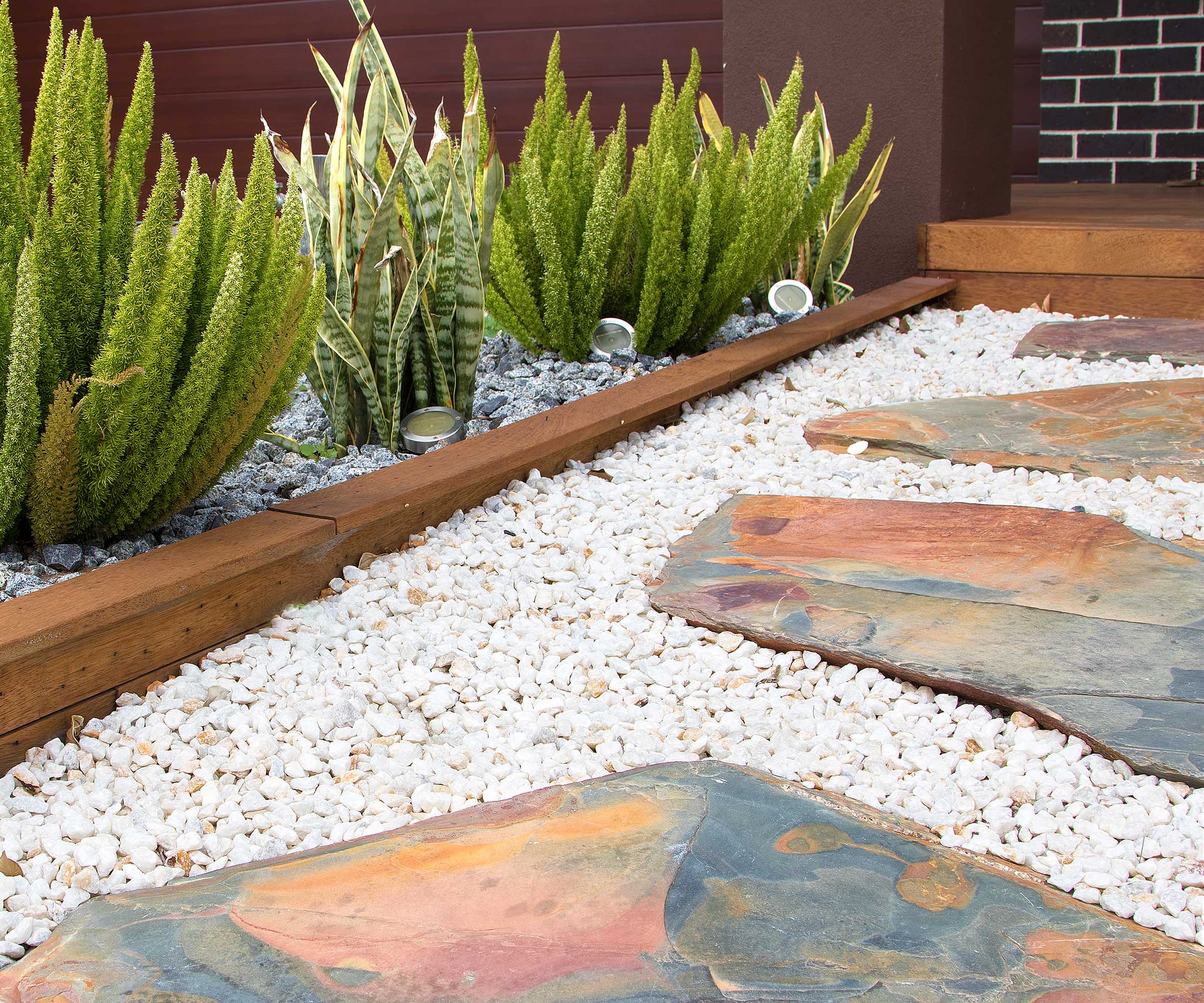
Urban and built-up areas typically have excessive amounts of concrete, asphalt and paved surfaces, which increases surface runoff. Permeable paving materials, such as gravel or porous paving slabs, allow rainwater to drain and be absorbed in the ground below, thereby preventing water from pooling on the surface.
For those considering backyard landscaping ideas this year, it is recommended to use a combination of materials that are porous and/or permeable to help resolve drainage issues. Helpfully, many gravel garden ideas can be attractive and used effectively in preexisting garden designs.
Using gravel in pathways, as seen in the image above, is a simple and efficient idea for improving drainage in your yard. This project is a quick and cost-effective solution that can be achieved without too much difficulty.
4. Install a rain garden
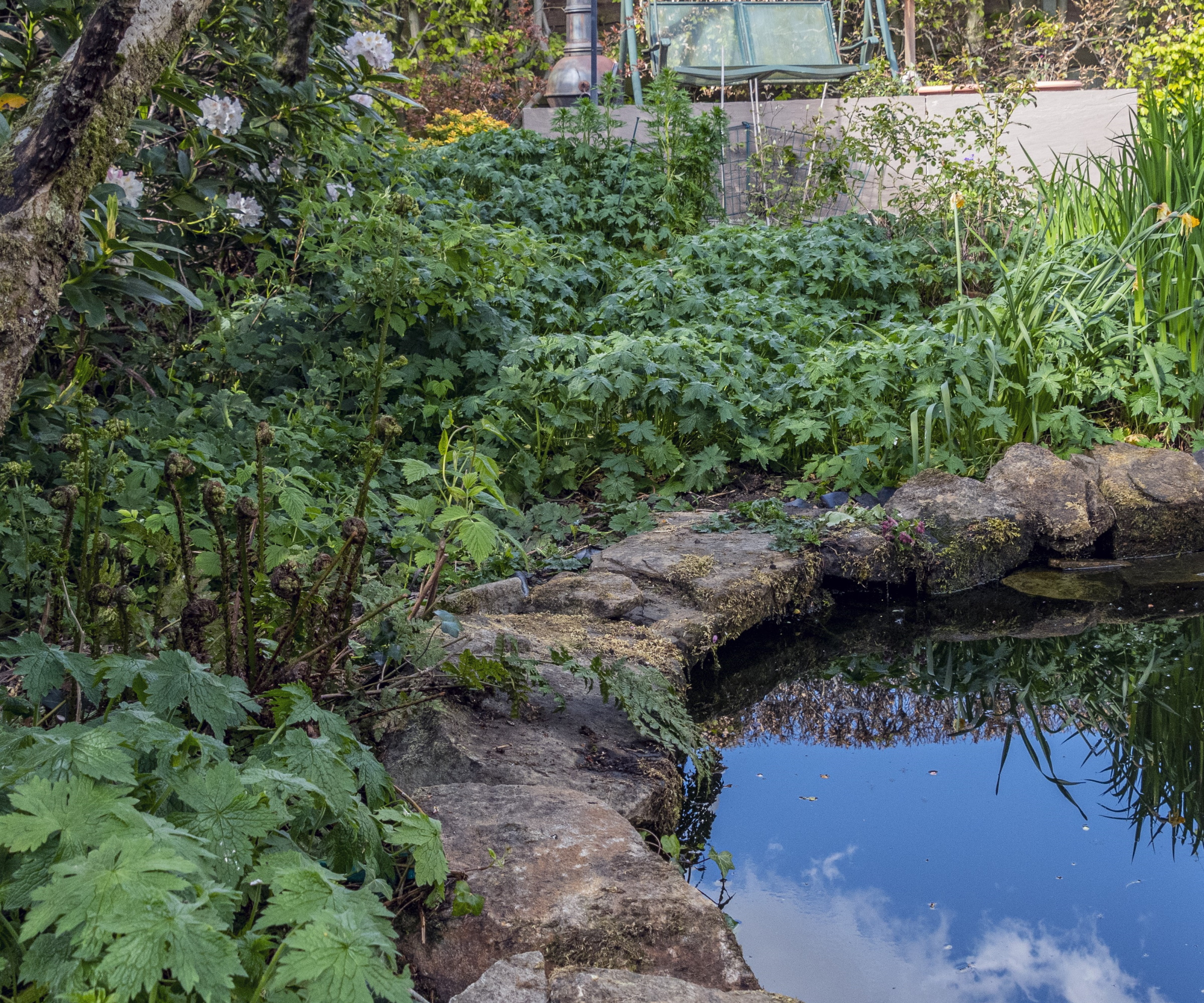
Rain gardens have grown in popularity in recent years and for obvious reasons. For those asking what is a rain garden, this clever landscaping idea is designed to capture and absorb rainwater runoff, allowing the water to pool in a safe area, such as a bog garden, and slowly drain away.
While this might sound complicated, rain gardens are easy to install. By excavating a shallow, small ditch in the backyard, you can provide a natural course for rainwater to flow.
For those considering garden pond ideas, this clever design technique might be the option for you, and by incorporating some of the best water garden plants that are suited to wetland or bog areas, you can create an attractive and unusual section of the yard that will prove popular with pollinators.
FAQs
What is the quickest way to improve lawn drainage?
For those gardeners asking how to fix a waterlogged lawn, fear not, there are methods and solutions that can help. It is recommended that you regularly mulch your garden borders to improve the quality of the soil, particularly those borders surrounding lawn areas. It is also a good idea to annually aerate your lawn, which will improve drainage and add air to your soil. This can be achieved by simply spiking the lawn with a garden fork.
For those homeowners with drainage problems and excessive levels of surface runoff, implementing one or more of the solutions listed above can certainly help to prevent and reduce issues experienced during heavy periods of rainfall.
Why not also consider other rainwater harvesting techniques, such as installing rain chains in your yard, and redirecting rainfall to rain barrels or garden borders? This sustainable approach to saving rainwater can also help to reduce runoff in your yard.

Thomas is a Content Editor within the Gardens Team at Homes and Gardens. He has worked as a professional gardener for both public spaces and private estates, specializing in productive gardening, growing food and flowers. Trained in Horticulture at the Garden Museum, he has written on gardening and garden history for various publications, including The English Garden, Gardens Illustrated, Hortus, The London Gardener and Bloom. He has co-authored a Lonely Planet travel book, The Tree Atlas, due out in 2024.
